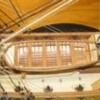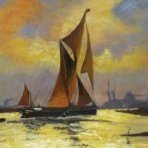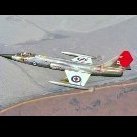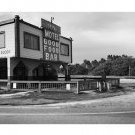MORE HANDBOOKS ARE ON THEIR WAY! We will let you know when they get here.
×
-
Posts
382 -
Joined
-
Last visited
Reputation Activity
-
 davec reacted to CDW in Westland Sea King HU.5 by chadwijm6 - FINISHED - Airfix - 1/48
davec reacted to CDW in Westland Sea King HU.5 by chadwijm6 - FINISHED - Airfix - 1/48
Excellent cockpit! That’s eye-popping good.
-
 davec reacted to chadwijm6 in Westland Sea King HU.5 by chadwijm6 - FINISHED - Airfix - 1/48
davec reacted to chadwijm6 in Westland Sea King HU.5 by chadwijm6 - FINISHED - Airfix - 1/48
Damn these PE bits are fiddly.... Getting there though.
Dry fit at the moment. I'm thinking I might spray a walkway through the cabin. Not exactly sticking to the reference photos but I've seen a couple like this and I think it looks good.
-
 davec reacted to tennfox in Help with Stern and Bow design 1779 6th Rate Frigate
davec reacted to tennfox in Help with Stern and Bow design 1779 6th Rate Frigate
I am attempting to recreate the 1779 Frigate "Protector". Not much is known about her.
In April, 1778, the General Court resolved to build a frigate of 28 guns which would carry two hundred officers and men. This vessel was built at Newburyport and was named the Protector. In the fall of 1779 it was nearing completion. The launching of the Protector, which was the largest ship in the Massachusetts navy, was a matter of more than usual local interest. Stephen Cross who was in charge of the construction of the frigate wrote a letter to the Board of War in July, 1779, which throws light upon the minor naval duties of the Board.
it appears she was built right after the Boston, which was built by the same company in Newburyport,, Stephen and Ralph cross.
I know she had 5 windows on the captains cabin, and that's about it. I'm going to venture a guess and say the figurehead on the bow was a man with a shield and maybe a sword or spear. a model on this page shows the Boston with a roman soldier with a shield and spear. Maybe the rear decor was a shield above the window or maybe crossed swords. Just guessing here.
I know there is a wealth of nautical knowledge here and I'm asking for the best educated guesses on the stern decor and figurehead. Since we have 3d printers anything is game. My distant grandfather was aboard her during the revolutionary war and I would like to do her justice.
thanks
-
 davec got a reaction from AJohnson in 18th Century Longboat 1750-1760 by davec - Model Shipways - 1/48
davec got a reaction from AJohnson in 18th Century Longboat 1750-1760 by davec - Model Shipways - 1/48
I think I'm finally in business with the frames being properly oriented. I have some night shifts and travel coming up. It will be a week or so before I can start fairing.
-
 davec got a reaction from CiscoH in 18th Century Longboat 1750-1760 by davec - Model Shipways - 1/48
davec got a reaction from CiscoH in 18th Century Longboat 1750-1760 by davec - Model Shipways - 1/48
In addition to my DH-9, I’ve also started the Model Shipways longboat. There are lots of other build logs with pictures of the kit parts, so I won’t repeat pictures here. I'm very appreciative of all the other great logs to use for reference. This build will be very heavily kit-bashed. I’m planning on replacing all of the basswood with boxwood.
I’m very grateful to Chuck, who laser cut the frames for me. I was going to try to cut them on a scroll saw, but was worried that it wouldn't work as well as the laser for the partially cut inside each frame, which is important to hold everything together while fairing and planking.
Chuck not only sent me laser cut frames, but also the other laser cut pieces. The kit includes 3/32 thick basswood frames, which are a little out of scale, but necessary as the basswood isn’t as forgiving as boxwood for fairing and clamping the planks. Chuck cut the frames on 1/16” boxwood, which is more to scale. I thought I would have to scratch the false keel with 1/16 instead of 3/32 slots, but even that had been adjusted for – tremendously impressive.
I usually scratch build, so this was my first experience with laser cutting and removing char. The thread on char removal (char-removal-arrrghh) was really helpful. Scraping with an 11 blade followed by 320 grit sandpaper has worked pretty well for me. I’ve been using an abrasive cleaning stick so I don’t have to discard the sanding stick once it gets dirty with char, which has also worked pretty well. It is also taking some time to get used to adjusting the laser kerf to a right angle. Removing char and kerf without changing the part's size and shape has been a challenge. I thought I had screwed up taking too much off the stem when I saw it didn't line up with the keel. I saw Chuck’s comment in the other thread that he makes the parts oversize to allow for cleanup and checked the plans. The stem is the right size and I just need to sand down the keel to match.
I’m having mixed feelings about laser cutting. It is great for complicated parts like the frames and the keelson with all the slots. I just made the filler pieces for the bow. It was much faster to cut them on the scroll saw than it would have been to clean the char. I’ll probably be selective about which laser cut pieces I use and which ones I replace moving forward.
Keel and keelson are done and glued. I think I have the tapering right for the rabbet, and after a little filing, the frames all fit in the slots in the keelson. I'll start assembling the frames soon.
-
 davec got a reaction from yvesvidal in AMC DH9 by davec - FINISHED - Wingnut Wings - 1/32
davec got a reaction from yvesvidal in AMC DH9 by davec - FINISHED - Wingnut Wings - 1/32
Ken - many thanks! That will save me a step and decrease the chance that I have another painting mishap.
Sprayed a lot of red paint today. The wings are drying. I went back to the fuselage, pulled off the rest of the masking, put a wash on the leather around the cockpit, and did more touching up. I also finished painting the tail. The stabilizer doesn't lie flat, so some of that area may end up visible. I'm very pleased with the instrument panel touch up. I didn't take a before picture, but the overspray was pretty significant. This is a vast improvement and I think this is the best I'm going to do - it isn't that easy to reach with a brush. I'll touch up the red on the edge (didn't see that until the picture). The red tinge on the middle upper instrument is probably reflection. It wasn't there when I went back to the model.
-
 davec got a reaction from yvesvidal in AMC DH9 by davec - FINISHED - Wingnut Wings - 1/32
davec got a reaction from yvesvidal in AMC DH9 by davec - FINISHED - Wingnut Wings - 1/32
I’ve been working on the model for a few minutes every few days. I got the fuselage closed. Tolerances are always so tight that despite being really careful to clean up the glue joints, I end up with a little step at the joint that requires some sanding and filling. I had a few mistakes when priming and sanding, especially not masking far enough away from where I was working and getting some overspray on the instrument panel, which was very frustrating. I always find masking world war 1 models with the exposed engines and open cockpits really challenging - please let me know if you have any suggestions. I’m painting the model red, so used white primer.
I just sprayed the red paint, which went down pretty well. The lobster scheme has decals over nearly the entire fuselage, so I sprayed gloss paint, which should let me put the decals on directly (do I need a clear gloss coat over a gloss finish?).
It looks pretty toylike now, but with the decals on and a clear flat coat, should look as intended. I’ve cleaned up the overspray and touched up, and am feeling better about the progress. I’ve always had difficulty getting a good finish brushing Tamiya paint and had my first revelation of the project – I highly recommend Tamiya retarder. Mixing a drop of retarder with a few drops of paint in a palette completely changes how it brushes – all of a sudden it flows really well. I’ve got a lot of the rest of the parts cut out and sanded and most painted. I masked and primed the wings this morning.
-
 davec got a reaction from Haliburton in AMC DH9 by davec - FINISHED - Wingnut Wings - 1/32
davec got a reaction from Haliburton in AMC DH9 by davec - FINISHED - Wingnut Wings - 1/32
Engine finished and the rest of the cockpit and engine compartment complete. Dry fit of the fuselage halves looks good. I spent a few hours cutting most of the rest of the parts off the sprues and cleaning them up, drilling holes for wire reinforcements for aileron and stabilizer attachments, and drilling holes for the rigging attachments. I didn't take pictures - just looks like a pile of parts.
-
 davec got a reaction from Papa in AMC DH9 by davec - FINISHED - Wingnut Wings - 1/32
davec got a reaction from Papa in AMC DH9 by davec - FINISHED - Wingnut Wings - 1/32
Thanks everyone for the comments and the likes. Javlin - special thanks for the compliment about the woodgraining, which is something I put a lot of time into.
The cockpit is starting to come together. This part is always slow for me. The parts fit great with no paint on them – WNW kits have amazing tolerances. Wood graining takes four coats of paint (basecoat/oil streaking/clear tint/clear flat). The streaking is brushed and adds extra thickness. When two wood grained parts get attached to each other, there can be 8 layers of paint in between (4 on each side) before cleaning. In the past when I haven’t paid enough attention to scraping paint, I’ve had fit issues getting the fuselage halves together. Tamiya has a clear flat base that I might try adding to the clear yellow or orange tint to see if I can drop a layer (and save time – for parts where I have to paint the two sides separately, it can take a week of painting to get the parts wood grained). So far, so good, but I won’t know for sure until I button up the fuselage, hopefully this weekend.
-
 davec reacted to wefalck in SMS WESPE 1876 by wefalck – FINISHED - 1/160 scale - Armored Gunboat of the Imperial German Navy - as first commissioned
davec reacted to wefalck in SMS WESPE 1876 by wefalck – FINISHED - 1/160 scale - Armored Gunboat of the Imperial German Navy - as first commissioned
Thanks once more gentlemen for your encouraging praise!
************************************************************
Toolkit for the gun
The operation of the gun required quite a few different tools for handling the projectiles and the powder-bags, as well as for cleaning and maintenance.
There were two different wipers, one for cleaning with soap-water and the other one for greasing the bore after use. This still was the era of black powder, which means that the bore had to be cleaned frequently.
Loading required a rammer to push the projectile and the powder-bags into the chamber of the gun. The rammer also served to unload the gun by pushing it through the muzzle. It had a depression in the front so that one would not push onto the fuse.
The large-scale instruction model in the (former) Orlogmuseet in Copenhagen came with many of the necessary tools. Their look tallies with the description of a textbook on the Imperial German naval artillery (Galster, 1885). The length of the shaft was given as the length of the barrel plus some extra for one or two men to be able to hold onto it, while it was fully inserted. If there were not enough space for such long implements, there were also versions in two parts with a brass connecting sleeve.
Wiper (top) and rammer (bottom)
The body of the implements was turned from some 2 mm steel rod, as I had this to hand. The shaft is a 0.8 mm piano wire. The latter appears to be quite hefty, but seems to tally with the photographs.
Wipers and rammer before painting
As the gun will be shown undergoing a drill, the wipers are not needed and will be shown in their protective canvas covers, stored in the racks on deckhouse as per photograph below.
Wipers in their protective canvas covers
The canvas covers were simulated with some Vallejo liquid putty. According to Galster (1885) the covers were supposed to be painted black, but the above photograph indicates that they were white, which is what I opted for.
The rammer body has two copper-bands to protect it, which were simulated with paint. The limited space in barbette seems to prevent the use of a full-length rammer, so I gave the end of the shaft a connecting sleeve simulated with paint.
Tampion
The photograph of the instruction model in Copenhagen also shows the expanding tampion that was constructed from two brass discs with some fibre material in between that was contained by a leather sleeve. An internal screw operated by a T-shaped handle squeezed the fibres between the disc and made them expand to lock into the muzzle.
Expanding tampion for the 30,5 cm gun
The tampion is probably going to be the very last machined part on this model. It was turned from a length of brass rod. The handle was first turned as a thin disk and then the excess material was milled away to leave the T-shaped handle standing. The greased leather sleeve has been simulated by some brown paint.
Turning the tampion
Milling the tampion handle
The painted wipers, rammer and tampion
Next on the list are the anchor-crane, the flagpole and flag and finally the gun-sights
To be continued ....
-
 davec reacted to wefalck in SMS WESPE 1876 by wefalck – FINISHED - 1/160 scale - Armored Gunboat of the Imperial German Navy - as first commissioned
davec reacted to wefalck in SMS WESPE 1876 by wefalck – FINISHED - 1/160 scale - Armored Gunboat of the Imperial German Navy - as first commissioned
Thanks again, gentlemen, for your praise !
@Keith Black: A Preiser set of unpainted figures, in N-scale, will be the starting point for making the crew. Lots of carving, sculpting and micro-surgery, I expect.
@shipmodel: I had been toying with the idea of using such monofilament, but I don't like its sort of light translucency (which would require painting) and I am not sure, whether simulating chain by double-twisting the material would work with this material. Perhaps I should give it a try with thermosetting the twists with my hot-air gun.
-
 davec reacted to wefalck in SMS WESPE 1876 by wefalck – FINISHED - 1/160 scale - Armored Gunboat of the Imperial German Navy - as first commissioned
davec reacted to wefalck in SMS WESPE 1876 by wefalck – FINISHED - 1/160 scale - Armored Gunboat of the Imperial German Navy - as first commissioned
Thank you very much, gentlemen, for your appreciation !
**********************************************************
Installing the ship’s boats 3
The installation was movd further to completion by tidying up the loose ends and producing the bunts for runners of the boat tackles. The runners are about five times the distance between the head of the davits and the waterline long, plus some extra for handling. However, as the rope is slightly overscale the runners were cut a bit on the short side in order to make the bunts not too bulky. The actual runners were cut above the cleats and the bunts were formed over two clothes pins driven into a piece of wood and have a loop pulled out with which they can be hung over their respective cleat.
Note that the runners for the ‘ready’ boat are not arranged in bunts but in coils, ready to be thrown loose so as to allow the boat being lowered quickly e.g. in a case of man-over-board.
Again, working from the inside out, the next items to go on were the stays for the davits. Luckily, the stays are drawn in the lithographs so that their points of fixation are known. I had to deviate a bit from those drawings, as they pertain to the longer, turning davits for the boats stored on rack, which belong to a slightly later period. The stays are supposed to keep the davits aligned, rather than helping to swing them around.
It was a bit of a trial-and-error procedure, before I came up with a protocol for making miniature fake chains of exactly the right length and with loops at both ends. The chains would have been shackled into ring-bolts at the head of the davit. No way of making shackles in this scale, so I just tied the fake chains to ring-bolts with fly-tying thread.
Some people may think now that’s it, but in fact there still is quite a long to-do list for little details:
- davit for the stern-anchor
- flag-poles and flags
- for the gun: tampon, wiper, rammer, and two gun-sights
- and the … crew!
To be continued ....
-
 davec got a reaction from Ryland Craze in 18th Century Longboat 1750-1760 by davec - Model Shipways - 1/48
davec got a reaction from Ryland Craze in 18th Century Longboat 1750-1760 by davec - Model Shipways - 1/48
I think I'm finally in business with the frames being properly oriented. I have some night shifts and travel coming up. It will be a week or so before I can start fairing.
-
 davec got a reaction from DocRob in AMC DH9 by davec - FINISHED - Wingnut Wings - 1/32
davec got a reaction from DocRob in AMC DH9 by davec - FINISHED - Wingnut Wings - 1/32
Ken - many thanks! That will save me a step and decrease the chance that I have another painting mishap.
Sprayed a lot of red paint today. The wings are drying. I went back to the fuselage, pulled off the rest of the masking, put a wash on the leather around the cockpit, and did more touching up. I also finished painting the tail. The stabilizer doesn't lie flat, so some of that area may end up visible. I'm very pleased with the instrument panel touch up. I didn't take a before picture, but the overspray was pretty significant. This is a vast improvement and I think this is the best I'm going to do - it isn't that easy to reach with a brush. I'll touch up the red on the edge (didn't see that until the picture). The red tinge on the middle upper instrument is probably reflection. It wasn't there when I went back to the model.
-
 davec got a reaction from DocRob in AMC DH9 by davec - FINISHED - Wingnut Wings - 1/32
davec got a reaction from DocRob in AMC DH9 by davec - FINISHED - Wingnut Wings - 1/32
I’ve been working on the model for a few minutes every few days. I got the fuselage closed. Tolerances are always so tight that despite being really careful to clean up the glue joints, I end up with a little step at the joint that requires some sanding and filling. I had a few mistakes when priming and sanding, especially not masking far enough away from where I was working and getting some overspray on the instrument panel, which was very frustrating. I always find masking world war 1 models with the exposed engines and open cockpits really challenging - please let me know if you have any suggestions. I’m painting the model red, so used white primer.
I just sprayed the red paint, which went down pretty well. The lobster scheme has decals over nearly the entire fuselage, so I sprayed gloss paint, which should let me put the decals on directly (do I need a clear gloss coat over a gloss finish?).
It looks pretty toylike now, but with the decals on and a clear flat coat, should look as intended. I’ve cleaned up the overspray and touched up, and am feeling better about the progress. I’ve always had difficulty getting a good finish brushing Tamiya paint and had my first revelation of the project – I highly recommend Tamiya retarder. Mixing a drop of retarder with a few drops of paint in a palette completely changes how it brushes – all of a sudden it flows really well. I’ve got a lot of the rest of the parts cut out and sanded and most painted. I masked and primed the wings this morning.
-
 davec reacted to Chuck in Sloop Speedwell 1752 by Chuck - Ketch Rigged Sloop - POF - prototype build
davec reacted to Chuck in Sloop Speedwell 1752 by Chuck - Ketch Rigged Sloop - POF - prototype build
One of the benefits of working at 1/32" scale is of course the size. I think its easier to handle the parts and keep things neat and tidy. But in addition to that you can really get a lot of details in there. Stuff I would never attempt to add on smaller scales. Further, 1/32 and better yet 1/35 scale is a very popular modeling scale. There are so many aftermarket parts and details available for builders at this scale. This includes figures and accessories. Like the small cups and pitcher. Its all readily available on Etsy or Ebay. Its also fun to just look. I am waiting on a few other things I made add.
The barrels are Syren barrels. I am also getting some new ones in stock I think you guys will like. It might be a while though.
The checker is still very tiny but that is laser cut by me including small very teensy checkers. The stools are also laser cut in cedar and very differnt from the cushy chairs in the great cabin for the officers.
The cups and tea cups and teapot are all 3d prints from EBAY. They were cheap and there are so many to choose from....you can add crates and boxes full of food and pots and pans and utensils. Its really just up to you and how much fun you might want to have with it.
The officer in the great cabin is from Vanguard. It had a tall hat so I removed that and just shaped some hair in the traditional pony tail of the day. I didnt want to really paint these items as I want them to all fade into the background. I want to keep it all very suggestive and simple. So rather than paint everything with realistic coloring with all the uniform colors and fanfare, I am just finishing all this stuff as if it was wood color...and carved. Its a minimalist approach so the ship itself takes center stage. But it will all be covered and just barely visible when the decks are planked. But still you might just get a glimpse and a happy surprise if you look hard enough. I think it will be fun.
I do actually have a few more 1/32 and 1/35 scale odds and ends coming in the mail. We shall see if they make the cut and I add them to the model. I dont want to over do it. For all you guys who would do the same...try and stick with 1/35 scale details. They are plentiful and just a tad smaller and look better on the model.
Chuck
-
 davec reacted to Pirate adam in HMS Crocodile 1781 by Pirate adam - 1/48 scale - POF
davec reacted to Pirate adam in HMS Crocodile 1781 by Pirate adam - 1/48 scale - POF
I have started working on a building board following the description in Ed Tosti's Naiad book. I used a similar, smaller board for by galley Washington. I still need to build the gantry and accessory parts for holding the keel, aligning frames, etc.
-
 davec reacted to Pirate adam in HMS Crocodile 1781 by Pirate adam - 1/48 scale - POF
davec reacted to Pirate adam in HMS Crocodile 1781 by Pirate adam - 1/48 scale - POF
I have collected a number of references for building this ship. I started with a printed copy of the lines plans from the National Maritime Museum. I have also made a lot of use of "The Elements and Practice of Naval Architecture 1812" which is available as an electronic download from Google books. I have also taken a lot of dimensions from "Scantlings of Royal Navy Ships 1719-1805" by Allan Yedlinsky. That book contains information from "The Shipbuilders Repository" of 1788. Both "The Elements and Practice of Naval Architecture" and "The Shipbuilders Repository" are believed to have used the Porcupine class in the tables of scantlings for 24 gun ships. I have found the dimensions from "The Shipbuilders Repository" seem to more closely match the dimensions from the Admiralty Draught in many cases vs. dimensions from "The Elements and Practice of Naval Architecture." I also have the "Anatomy of the Ship The 24-Gun Frigate Pandora" book by John McKay and Ron Coleman. This book is a treasure trove of information for a very similar ship.
I have finished all the basic drawings that I need to get started building, but still have work to go to have a "full set" of working drawings. I have little concern that it will be easy enough to keep ahead of construction with the drawing development. I am far enough along that I have confidence that I can start building without any regrettable mistakes to have to deal with later.
-
 davec reacted to Pirate adam in HMS Crocodile 1781 by Pirate adam - 1/48 scale - POF
davec reacted to Pirate adam in HMS Crocodile 1781 by Pirate adam - 1/48 scale - POF
After completing my Washington Galley, I am ready to start a new project. I will start on the HMS Crocodile of 1781. The Crocodile was a 24 gun Porcupine class post ship. It is a sister ship of the famous HMS Pandora of 1779. It was a ship of no particular significance and was wrecked off Prawle Point, England in 1784. I chose the Crocodile for several reasons. Firstly, I was looking to do a small frigate that would be a "reasonable size" at 1:48 scale. Secondly, I wanted to do a ship that I have never seen anyone build before. Thirdly, I really like the look of the ship in the drawings that are available from the NMM.
I purchased the plans of the ship from the National Maritime Museum. The plans include the figurehead and stern carvings. I am blown away by the beauty of the original drafting and that the plans are still in good shape after over 240 years. I have been working for several months drafting working drawings in TurboCad. I am hoping to finish the model over the next 8+ years.
I would like to thank a number of people before I even get started. I followed Wayne Kempson's article Drafting Ship Plans in CAD from the NRG homepage almost from start to finish to draft the lines plans for Crocodile. I also have worn out the drafting section of Ed Tosti's Naiad book and David Antscherl's Fully Framed Model series. I do not think it would have been possible for me to draft a set of plans for a fully framed model without all of their work. Allan Yedlinsky's book Scantlings of Royal Navy Ships 1719-1805 has also been immensely helpful. Finally thank you to all the members of MSW going back to the original MSW for all the inspiration and for answering questions over the years. I don't think I would ever have even dreamed of starting a model of this complexity without seeing all the great work done by so many amazing modelers over the years.
Adam
-
 davec got a reaction from Landlubber Mike in AMC DH9 by davec - FINISHED - Wingnut Wings - 1/32
davec got a reaction from Landlubber Mike in AMC DH9 by davec - FINISHED - Wingnut Wings - 1/32
Ken - many thanks! That will save me a step and decrease the chance that I have another painting mishap.
Sprayed a lot of red paint today. The wings are drying. I went back to the fuselage, pulled off the rest of the masking, put a wash on the leather around the cockpit, and did more touching up. I also finished painting the tail. The stabilizer doesn't lie flat, so some of that area may end up visible. I'm very pleased with the instrument panel touch up. I didn't take a before picture, but the overspray was pretty significant. This is a vast improvement and I think this is the best I'm going to do - it isn't that easy to reach with a brush. I'll touch up the red on the edge (didn't see that until the picture). The red tinge on the middle upper instrument is probably reflection. It wasn't there when I went back to the model.
-
 davec got a reaction from CiscoH in 18th Century Longboat 1750-1760 by davec - Model Shipways - 1/48
davec got a reaction from CiscoH in 18th Century Longboat 1750-1760 by davec - Model Shipways - 1/48
I think I'm finally in business with the frames being properly oriented. I have some night shifts and travel coming up. It will be a week or so before I can start fairing.
-
 davec got a reaction from VTHokiEE in 18th Century Longboat 1750-1760 by davec - Model Shipways - 1/48
davec got a reaction from VTHokiEE in 18th Century Longboat 1750-1760 by davec - Model Shipways - 1/48
I think I'm finally in business with the frames being properly oriented. I have some night shifts and travel coming up. It will be a week or so before I can start fairing.
-
 davec got a reaction from iMustBeCrazy in 18th Century Longboat 1750-1760 by davec - Model Shipways - 1/48
davec got a reaction from iMustBeCrazy in 18th Century Longboat 1750-1760 by davec - Model Shipways - 1/48
I think I'm finally in business with the frames being properly oriented. I have some night shifts and travel coming up. It will be a week or so before I can start fairing.
-
 davec got a reaction from CDW in AMC DH9 by davec - FINISHED - Wingnut Wings - 1/32
davec got a reaction from CDW in AMC DH9 by davec - FINISHED - Wingnut Wings - 1/32
Ken - many thanks! That will save me a step and decrease the chance that I have another painting mishap.
Sprayed a lot of red paint today. The wings are drying. I went back to the fuselage, pulled off the rest of the masking, put a wash on the leather around the cockpit, and did more touching up. I also finished painting the tail. The stabilizer doesn't lie flat, so some of that area may end up visible. I'm very pleased with the instrument panel touch up. I didn't take a before picture, but the overspray was pretty significant. This is a vast improvement and I think this is the best I'm going to do - it isn't that easy to reach with a brush. I'll touch up the red on the edge (didn't see that until the picture). The red tinge on the middle upper instrument is probably reflection. It wasn't there when I went back to the model.
-
 davec reacted to DocRob in AEG G.IV - Creature of the Night by DocRob - FINISHED - Wingnut Wings - 1/32
davec reacted to DocRob in AEG G.IV - Creature of the Night by DocRob - FINISHED - Wingnut Wings - 1/32
Progress is a bit slow at the moment, but I managed to prepare the wings for decaling and painted struts and other wing connected parts.
It´s a Wingnut kit and I spoke about tolerances before and that´s why used liquid mask and numbered tape strips for identification of the struts, to seal the connection points and wooden or plastic rods for the strut´s holes in the wing, glued in with heavily water thinned white glue.
I then applied some white pastel onto the seams of the wings, with a flat piece. This was the fastest and easiest way to pre shade the spars. I didn´t want to put much effort into this step, because I guess, it may remained unseen with the opacity of the lozenge decals on top.
Then the wings were coated with Mr Color GX-100 gloss varnish. I always have mixed results with that stuff. If everything works fine, it produces an absolutely fantastic gloss layer mixed with leveling thinner, but when not....
I learned the hard way, not to pre mix GX-100 in a plastic jar, as it produces very ugly ´frosted´ spray, maybe because color and/or thinner reacts with the plastic jar.
In this case, I mixed everything in a glass jar, but still, I had the frosting effect three times while spraying. After cleaning the airbrush, I used the same mix without issues, very strange.
Cheers Rob











